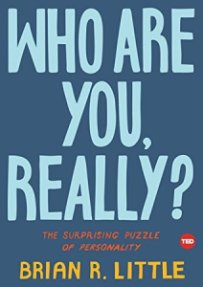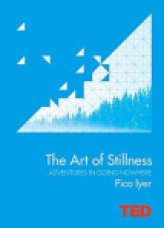
by Brian Little
Kita bukanlah sekadar dari apa yang diturunkan (Biogenic) dan apa yang ada di sekitar kita (Sociogenic). Kita bisa memilih (Idiogenic).
Pertanyaannya, bagaimana kita memilihnya?
Senantiasa Berada merupakan opsi untuk pasif memilih.
A Goodreads Summary
This fun, smart read for anyone eager to better understand (and improve) themselves argues that personality is driven not by nature nor nurture—but instead by the projects we pursue, which ultimately shape the people we become.
Traditionally, scientists have emphasized what they call the first and second natures of personality—genes and culture, respectively. But today the field of personality science has moved well beyond the nature vs. nurture debate. In Who Are You, Really? Dr. Brian Little presents a distinctive view of how personality shapes our lives—and why this matters. Little makes the case for a third nature to the human condition—the pursuit of personal projects, idealistic dreams, and creative ventures that shape both people’s lives and their personalities. Little uncovers what personality science has been discovering about the role of personal projects, revealing how this new concept can help people better understand themselves and shape their lives.
In this important work, Little argues that it is essential to devote energy and resources to creative endeavors in a highly focused fashion, even if it takes away from other components of our well-being. This does not mean that we cannot shift from one core project to another in the days of our lives. In fact, it is precisely that ability to flexibly craft projects that is the greatest source of sustainability. Like learning to walk, forcing ourselves out of balance as we step is the only way in which we can move forward. And it is the only way that human flourishing can be enhanced.
The well-lived life is based on the sustainable pursuit of core projects in our lives. Ultimately, Who Are You, Really? provides a deeply personal itinerary for exploring our personalities, our lives, and the human condition.
Return to Library

 by Eric Ries
by Eric Ries

